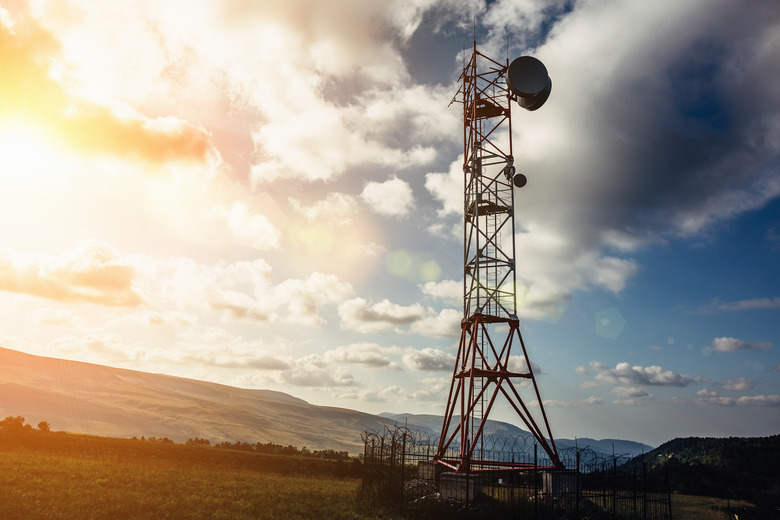What Is The Difference Between Radio Waves & Cell Phone Waves?
The electromagnetic spectrum includes a variety of radio waves, set at specific frequency bands which allow for radio, television, microwave and other types of transmissions across these bands. Each of these frequencies consist of a packet of charged photons which propagate out as waves of different vibrating frequencies expressed in Hertz. The measurement of these frequencies comes from the German physicist, Heinrich Hertz, who first proved the existence of the electromagnetic waves theorized by another scientist. Radio and cellphone frequency bands can both transmit analog or digital signals.
Electromagnetic Spectrum
Electromagnetic Spectrum
The Electromagnetic Spectrum comprises diverse bands of radiation which vibrate at different frequencies. Each of these particular kinds of radiation are measured in units of hertz cycles per second. In addition to radio waves and microwaves, the EM spectrum also includes infrared radiation, visible light, ultraviolet, X-rays and gamma rays.
Radio Waves
Radio Waves
A radio transmission is electromagnetic radiation that is made up of electrical and magnetic fields perpendicular to one another. They both move as a wave, cycling at a specific frequency. Energy in the wave moves back and forth between the magnetic and electrical fields. A radio signal propagates from its point of transmission in a spherical shape, as with higher-frequency radio waves as a more focused, narrower beam. The radio frequency range begins with the Extremely Low Frequency band at 3 hertz and extends to the Extremely High Frequency band at 300 gigahertz.
The Microwave Band
The Microwave Band
Cellular phone networks utilize multiple bands of EM spectrum, one of which is called UHF, or ultra-high frequency, sometimes known as microwave The frequency range for microwave radiation is between 300 megahertz and 300 gigahertz. UHF waves are also utilized in radar, microwave ovens and wireless local area networks. Microwaves on the electromagnetic spectrum can be further divided into different bands, depending on the frequency.
Wave Propagation
Wave Propagation
Radio and microwave transmissions propagate differently from their point of origin. Radio waves have a lower frequency and longer wavelength as compared to cell phone waves operating at higher microwave frequencies. Microwaves can carry a higher amount of information than radio signals, and are transmitted in narrower beams which can be aimed and focused to a greater degree than radio waves.
Cellular Phones
Cellular Phones
Cellular phone signals are transmitted on two bands, one between 800 to 900 megahertz and the other between 1.8 gigahertz to 1.95 GHz. Signals from a cellular phone transmit to a base-station, which relays it to the next station or other receivers on its network. Radio signals between a cellular phone and the network fluctuate in strength depending on the business of the network.
Cite This Article
MLA
Conceicao, Peter De. "What Is The Difference Between Radio Waves & Cell Phone Waves?" sciencing.com, https://www.sciencing.com/difference-waves-cell-phone-waves-6624355/. 17 May 2018.
APA
Conceicao, Peter De. (2018, May 17). What Is The Difference Between Radio Waves & Cell Phone Waves?. sciencing.com. Retrieved from https://www.sciencing.com/difference-waves-cell-phone-waves-6624355/
Chicago
Conceicao, Peter De. What Is The Difference Between Radio Waves & Cell Phone Waves? last modified March 24, 2022. https://www.sciencing.com/difference-waves-cell-phone-waves-6624355/
